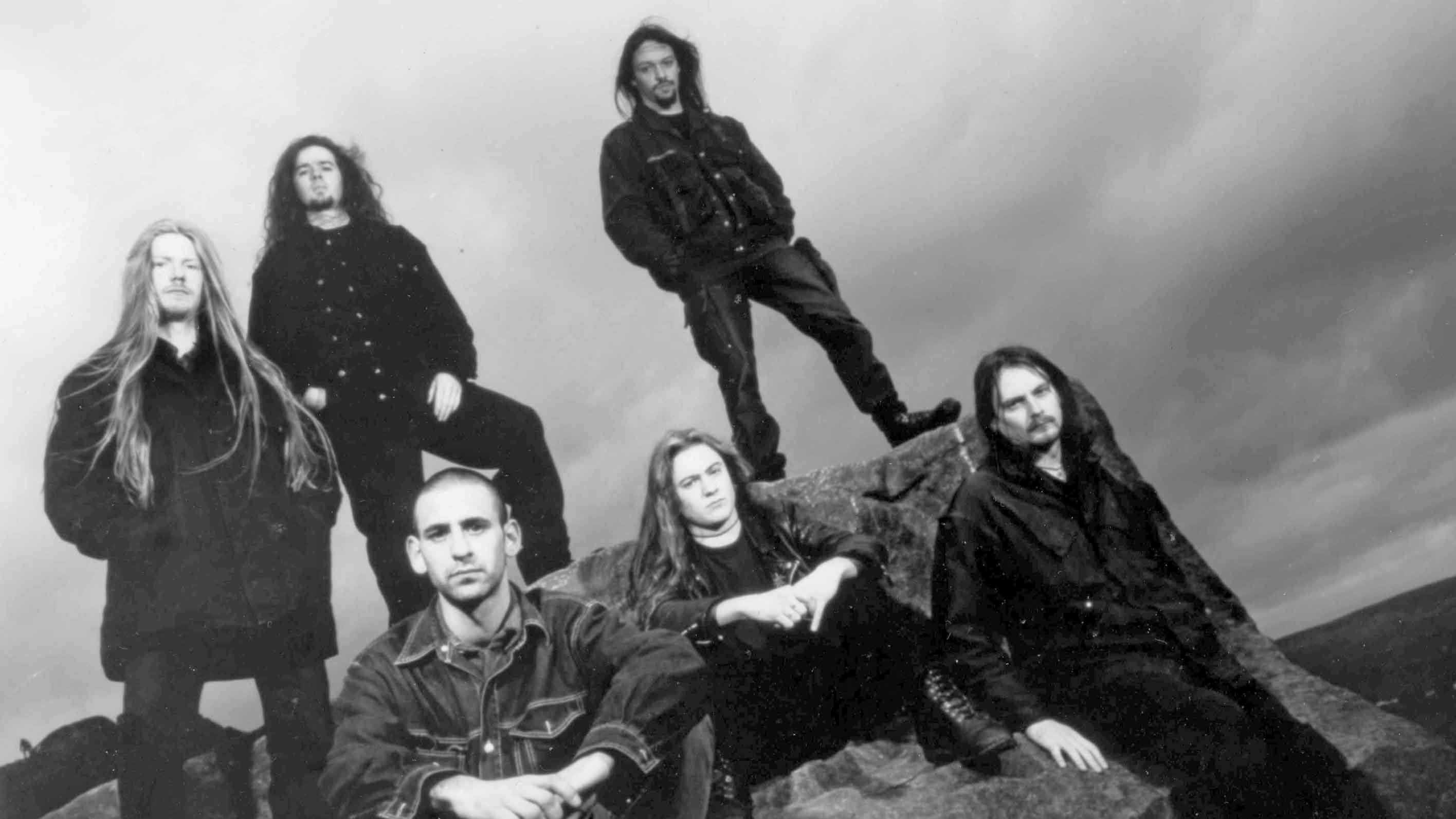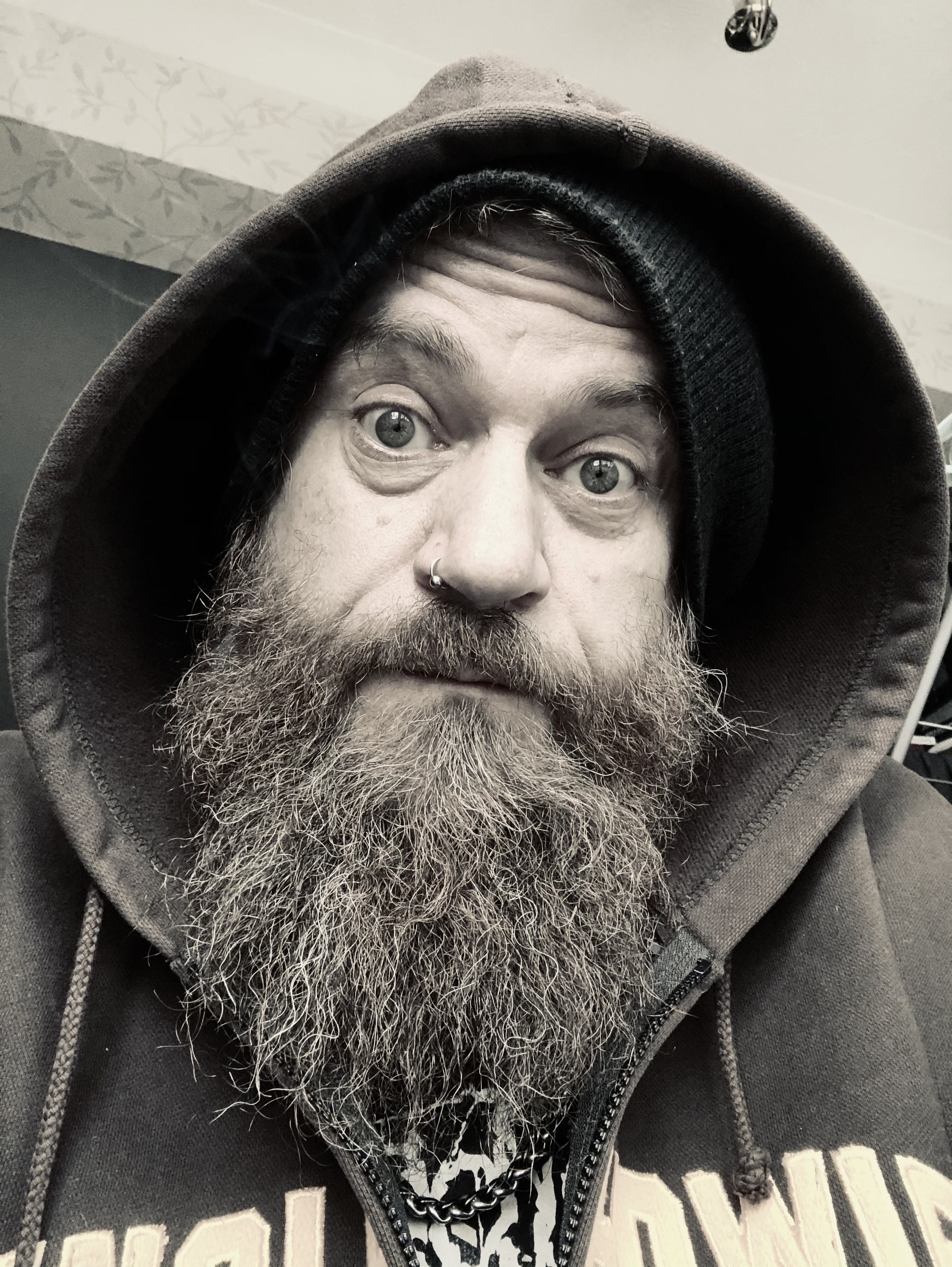Formed in Bradford, Yorkshire in 1990, doom metal crew My Dying Bride played slow and strange music that never stood the remotest chance of mainstream acceptance. Almost against the odds, their second album, 1993’s Turn Loose The Swans, had been widely hailed as an instant classic, propelling them to the forefront of the UK’s metal underground. No one was more delighted than the band themselves, as frontman Aaron Stainthorpe tells Hammer today.
“Apparently the second album is supposed to be the tricky one!” he laughs. “We just went into the studio and did what we do, and it went down an absolute storm. I believe it’s regarded as a classic and that’s wonderful. It was quite humbling really. But we needed to follow it up with something. Of course, we were aware that if we wanted to get on radio, we could nip some of our songs down a little bit so they were a bit shorter and more radio-friendly. So what did we do? We opened the next album with The Cry Of Mankind, nine minutes long!”
On paper, The Cry Of Mankind is a very unlikely candidate to be My Dying Bride’s biggest, best-loved song. Based around a repeating, six-note guitar motif, the opening track on 1995’s The Angel And The Dark River is a densely atmospheric and resolutely uncommercial, nine-minute voyage through pitch-black shadows, with Aaron’s anguished vocal a mesmerising focal point. The first two My Dying Bride albums had certainly contained plenty of left-field and avant-garde elements, but this was something else entirely.
“The birth of that song came around from a rehearsal, in a really hot rehearsal room,” Aaron recalls. “We all lifted our t-shirts up over our heads, so we looked like nuns, to stop the sweat from pouring down. We stopped rehearsing and we were having a cup of tea, and Calvin [Robertshaw, guitar] was noodling around in the background, being fucking annoying, to be honest! Ha ha ha! But then we started to hear that opening riff, those six notes, and we asked him to keep playing it. We just knew we had something there. The atmosphere in the room was palpable.”
Sensing that something special was happening, Aaron and his bandmates switched their focus to working on the new song.
“We turned all the lights off, because there was just enough ambient light and a couple of candles in the corner, and that song just grew and grew and grew. That’s the longest we’ve performed together without a single break. We must have been at it for two hours. Every move we made was perfect.”

Many bands would face stern opposition from their label if they presented a song as wayward and peculiar as The Cry Of Mankind, let alone as the new album’s opening gambit. Fortunately for My Dying Bride, Peaceville Records had always encouraged the band to follow their instincts and, as Aaron enthusiastically notes, enabled them to make music without external pressure to write hit singles. In fact, as they entered Academy Studios in Dewsbury, West Yorkshire, to record The Angel And The Dark River, Peaceville boss Paul ‘Hammy’ Halmshaw did his best to make the album even weirder than expected.
“By that time, Hammy was confident that he didn’t need to come to the studio to babysit us, but he came anyway and sat there smoking pot,” Aaron grins. “He filled the whole mixing room with smoke. It’s probably why The Cry Of Mankind goes on in that meandering, ethereal way. We were all just a little bit spicy at the time! We thought we should add some stuff on, so that just when you think the song’s fading out, other sounds start to creep in, left and right in your peripheral ears. We told Mags [Robert Magoolagan, producer] that we wanted church bells, we wanted cellos, the Full Monty. At some point there’s a helicopter rotor slowed down, and it sounded just amazing in the studio through those big speakers. But it’s all Hammy’s fault!”
Released on May 22, 1995, The Angel And The Dark River was an album full of brave and twisted musical moments, but The Cry Of Mankind immediately stood out as My Dying Bride’s greatest leap forward. Bolstered by its accompanying video, this wilfully bizarre song swiftly became a firm fan favourite. Best of all, the new album had somehow found its way into the ears of actual Steve Harris from Iron Maiden. And he really liked it.
“I’ve heard conflicting reports but The Cry Of Mankind was on a cover-mounted CD on a magazine, and I think Steve heard it through that. Someone else said that he’d seen the video, with me dressed as Christ, on MTV. I don’t know which is true, but either way, at some point Steve got hold of Andy’s [Craighan, guitar] phone number and rang him up. He put the phone down, thinking it was his brother winding him up! Ha ha! Steve rang again and eventually Andrew spoke to him and we got all the details sorted out. It was a six-week tour all around Europe, and it was just fucking great.”
From cheerful obscurity in the UK underground to driving around Europe in “the nicest tour bus we had ever seen”, My Dying Bride had an absolutely fantastic time on tour with Iron Maiden at the end of 1995. Aaron’s eyes still light up at the mere thought of it, as he remembers the first night of the tour in Helsinki, Finland.
“It’s 10 minutes before we go on, and we’re all shitting ourselves with nerves. There was a little knock at the door and Steve walks in. It was like fucking Jesus entering the room! He said, ‘I love your new album, you’re doing some interesting stuff!’ Then he said, ‘More importantly, who plays football?’ Me, Rick [Miah, drums] and Andy played, so he said that tomorrow, in Sweden, we were playing against one of the Swedish clubs’ B-teams. So not only had we just met him and we’re supporting Iron Maiden, but we’re going to play football with him too!”
Following an idiosyncratic musical course doesn’t work out well for everybody, but writing something as fervently out-there as The Cry Of Mankind clearly paid off for My Dying Bride. Aaron admits that not every crowd on the Maiden tour was enthusiastic about the band’s eight-minute dirges, but who cares? They played football with Steve Harris!
“In the match, Andy scored the first goal and then Rick scored the second. We couldn’t believe it! When Andrew banged the first goal in, all the tour buses were beeping and flashing their lights. It was a surreal moment. Pulling those tops on, with the Maiden logo on, and playing in Steve’s team was just amazing. The Swedes beat us 6-2 in the end, but we scored the first two! Afterwards we took one of those classic football team photographs, and the Swedish press were there, but I’ve never been able to find that photograph. It was late 1995. Does anybody know where it is? It must exist somewhere!”
A staple of My Dying Bride’s (somewhat infrequent) live shows since its release, The Cry Of Mankind was so far removed from standard notions of hits, anthems or catchy tunes that it still sounds defiant, unapologetic and gloriously weird 26 years later. For Aaron, it has endured as a profoundly emotional and intuitive piece of songwriting: the moment that My Dying Bride threw all caution to the wind and found their true calling. For devoted fans of the band, that spiralling, six-note riff is guaranteed to send a shiver down the spine.
What The Cry Of Mankind definitely doesn’t do, however, is remind Aaron of a football match in Stockholm. It’s really not that kind of song.
“The Cry Of Mankind is an entity all to itself. It’s the only song I cry all the way through, even though it wasn’t written for grieving purposes. The song is questioning God and beauty, waiting for an answer and the answer comes from the Devil instead. He’s got all the answers and God’s saying, ‘I’m having nothing to do with you…’ So when I sing that song, that’s what resonates. I definitely don’t remember Sweden and think, ‘Get in, Andy!’ Ha ha ha!”

